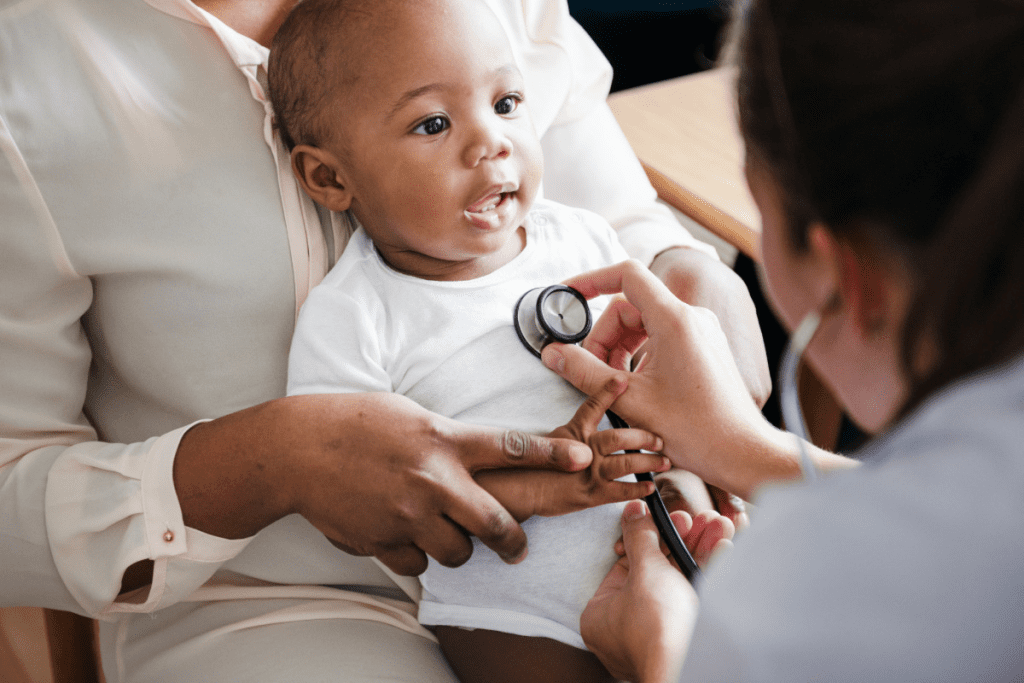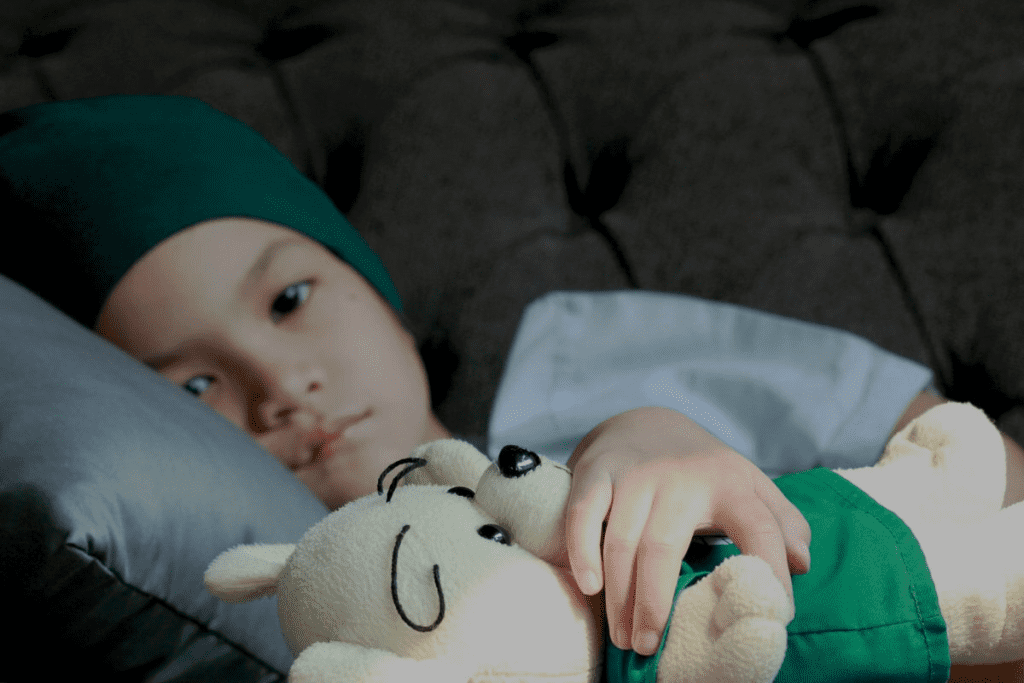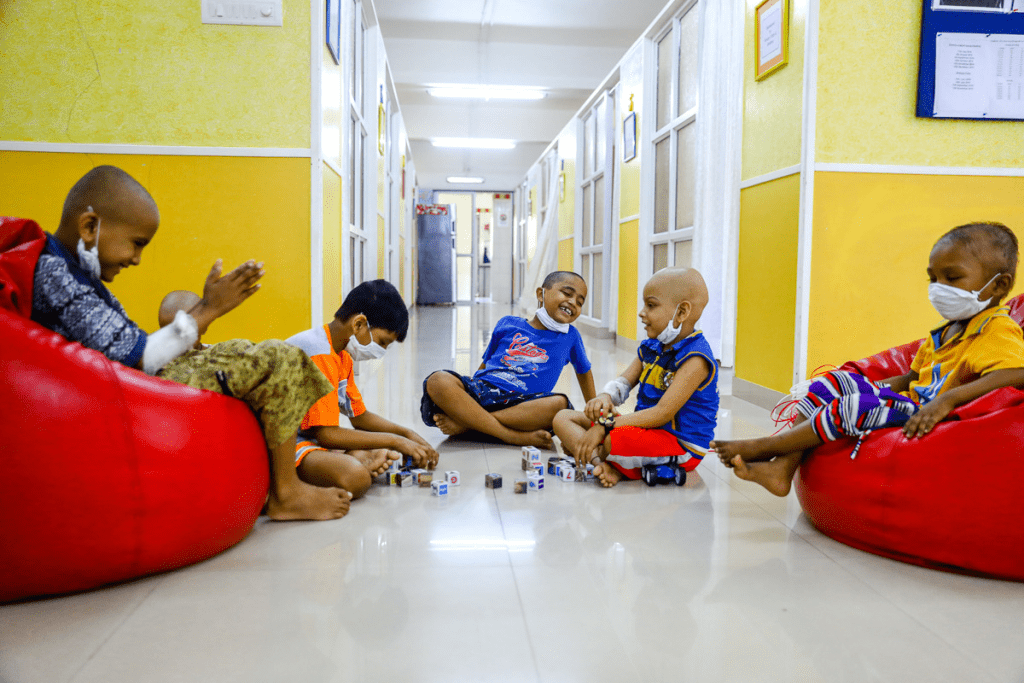Last Updated on November 13, 2025 by
What are two things children with cancer require? Learn about the dangerous and often overlooked risk of childhood obesity after treatment. Crucial steps for health.
Every year, hundreds of thousands of children are diagnosed with cancer. This raises important questions about what they need most, beyond just medicine. At Liv Hospital, we know that a cancer diagnosis is tough for families.

Children with cancer need two key things: timely access to specialized medical treatment and psychosocial support. We aim to give top-notch healthcare and support to patients from around the world.
We’re dedicated to helping children with cancer get the best care. We use the latest cancer treatment methods and offer care from many experts. This way, kids get the help they need to beat their illness.
Childhood cancer is a big problem worldwide, affecting families and communities. Every year, about 400,000 new cases of childhood cancer are diagnosed. This shows we need a global effort to tackle this issue.

Childhood cancer is a major health issue globally. The number of new cases each year shows how big the problem is. Around 400,000 children get cancer every year.
This number shows why we need to work together to help children with cancer. Some places have fewer resources to fight cancer. We must help these areas to improve treatment for all children.
Survival rates for children with cancer vary a lot. In rich countries, more than 80% of children can be cured. But in poorer countries, the cure rate is often below 30%.
This big difference shows we need better care for children with cancer everywhere. A study in Frontiers in Pediatrics talks about the importance of early detection and accurate diagnosis. It also stresses the need for good treatment plans and care for these children.
We are dedicated to closing this gap. We support efforts to make care better and raise awareness about early detection and treatment.
Children with cancer need quick and specialized medical help to live. Getting to the right treatment fast is key for their care.

Early detection and accurate diagnosis are the bases of good treatment plans. We use top-notch diagnostic tools to find out the cancer type and stage. This lets us make a treatment plan that fits each child’s needs.
Finding cancer early boosts treatment success chances. Early diagnosis means we might not need as strong treatments. This can help avoid long-term side effects.
Our treatments follow the latest research and guidelines. We keep our methods up to date with new discoveries in pediatric oncology.
Evidence-based treatment means our young patients get the best care. By sticking to proven methods, we aim for the best results with less harm.
Children with cancer need a multidisciplinary approach. Our team includes pediatric oncologists, surgeons, radiologists, and more. We work together to create detailed care plans that cover medical, emotional, and social needs.
Our team ensures every part of a child’s care is considered. This is from the first diagnosis to after treatment ends.
Treating pediatric cancer requires a mix of methods. Each child’s case is different, so we tailor treatments. This might include surgery, chemotherapy, radiation, and new therapies.
Surgery is key for some childhood cancers, like solid tumors. Our experienced surgeons team up with other experts. They choose the best surgery for each child, aiming for success with fewer side effects.
Chemotherapy and radiation are common treatments for kids with cancer. Chemotherapy uses drugs to kill cancer cells. Radiation therapy uses rays to destroy cancer cells. We follow proven methods to treat effectively with fewer side effects.
We offer our patients the newest cancer treatments through innovative therapies and clinical trials. These new treatments give kids with cancer new hope. They might lead to better results and fewer long-term effects.
Many children can’t get the specialized cancer treatment they need. This is because of many challenges. These challenges make it hard to treat childhood cancer effectively.
Living far from treatment centers is a big problem for some kids. Families in remote areas have to travel long distances. This is hard, even more so during intense treatment times.
Money is also a big issue. Families often can’t afford the costs of treatment. This includes travel, staying away from home, and lost work income.
Healthcare systems vary a lot around the world. This affects how well cancer care is available and quality. In some places, there’s not enough healthcare or experts to treat cancer well.
“The disparity in healthcare resources between high-income and low-income countries significantly affects the outcomes of childhood cancer treatment.”
Healthcare providers sometimes don’t know enough about cancer treatment. It’s important for them to keep learning. This helps improve how well they can treat cancer.
We need to fix these problems to make sure all kids get the cancer care they deserve. By understanding and solving these issues, we can help kids get the best care possible.
Children with cancer need more than just medical care. They also need emotional, psychological, and social support. This support is key to their well-being.
Helping kids and their families deal with cancer is vital. We offer counseling services that meet their unique needs. This helps them face the emotional hurdles of treatment.
Psychological support is also essential. It helps manage anxiety, depression, and other mental health issues. Our team of psychologists works with families to provide the needed support.
Family-centered care is a big part of our support. We involve the family in the care process. This ensures their needs are met and they’re supported every step of the way.
Treatment can affect a child’s education and social life. We support them in getting back to school and social activities after treatment.
Our goal is to help children with cancer and their families. We aim to improve their quality of life during and after treatment.
Keeping a healthy diet and staying active are key for kids with cancer. We know how important nutrition and exercise are to stop childhood obesity during treatment. We’re dedicated to helping our young patients stay healthy.
Cancer treatment can affect a child’s nutrition, leading to malnutrition or obesity. Nutritional support is vital to manage these issues. It helps ensure kids get the nutrients they need to grow and recover.
Children with cancer face many nutritional challenges, such as:
We team up with nutritionists and healthcare experts to create personalized nutrition plans. These plans help address these challenges and support the child’s health.
Physical activity is vital for kids with cancer, helping keep them strong and flexible. But it’s important to balance physical activity with the demands of cancer treatment. We make sure kids don’t push themselves too hard.
Our approach to physical activity includes:
For cancer survivors, promoting long-term health is key to prevent late effects like obesity. We guide them on healthy lifestyle choices, including nutrition and physical activity. This helps support their long-term well-being.
Some strategies for long-term health promotion include:
By tackling nutritional challenges, balancing physical activity with treatment, and promoting long-term health, we aim to provide complete care. We want to support the overall health and well-being of children with cancer.
Long-term follow-up care is key for childhood cancer survivors. It helps monitor and manage late effects of treatment. As treatments improve, more kids survive cancer. Now, we focus on helping them live healthy lives.
Survivors may face late effects from their treatment. These can include organ problems, growth issues, and higher cancer risks. Regular monitoring is vital to catch these early, for timely help.
We use a team approach to watch over survivors. This team includes oncologists, cardiologists, and endocrinologists. This care helps manage and lessen the long-term effects of cancer treatment.
Survivorship programs are essential for childhood cancer survivors. They offer education and resources for survivors and their families. Our programs are tailored to meet each survivor’s needs, including psychological support and nutrition advice.
Our programs also encourage healthy lifestyles. We give advice on exercise and nutrition to prevent issues like childhood obesity. This is important for survivors.
As survivors grow up, moving to adult healthcare is key. This transition needs careful planning for ongoing care. We help our young patients prepare for this change, giving them the info and support they need.
This way, we make sure our survivors get the care they need. They continue to receive the high-quality care they’ve had from the start.
The gap in cancer care between rich and poor countries is a big problem. We see the huge challenges these countries face in treating cancer. They struggle to give their people the care they need.
We join forces with others worldwide to tackle this issue. Our goal is to make sure everyone gets quality cancer care. International partnerships help us create care plans that fit each area’s needs.
These partnerships help us share knowledge and resources. We learn from each other and find new ways to help kids with cancer. This way, we can make cancer care better everywhere.
Changing treatment plans for places with less is key. We adjust our methods to fit what’s available. This makes sure care is both possible and effective.
We make treatments simpler and use what we have wisely. We also train local doctors to give top-notch care. This way, kids with cancer in poor countries get the best care possible.
Our work to help these countries is ongoing. It needs teamwork and new ideas. Together, we can change lives for kids with cancer all over the world.
Our team at Liv Hospital is dedicated to giving top-notch care to kids with cancer. We use the newest medical science to help them. We know treating pediatric cancer needs a team effort, and we’re all in.
At Liv Hospital, we use the newest treatments for pediatric cancer. This means our young patients get the best care possible. We stay up-to-date to give them the best chance at a good outcome.
“The key to successful pediatric cancer treatment lies in the timely adoption of evidence-based protocols and a patient-centered approach,” says one of our leading oncologists. This approach is fundamental to our practice at Liv Hospital.
Our teams work together to meet our patients’ complex needs. This team includes experts in pediatric oncology, surgeons, radiologists, nurses, and support staff. Everyone works together to give complete care.
At Liv Hospital, we focus on evidence-based and high-quality healthcare. We keep improving our methods to match the latest research and guidelines. This shows in our results and how happy our patients are.
We mix medical treatment with psychosocial support for a complete care plan. Our aim is to treat the cancer and support the whole family. We want to help our young patients and their families in every way we can.
Our commitment to pediatric cancer care is strong. We aim to make a big difference in the lives of children with cancer and their families.
Effective childhood cancer care needs a mix of medical treatment and psychosocial support. At Liv Hospital, we know kids with cancer face more than just health issues. They also need emotional and psychological help to deal with cancer’s challenges.
Combining medical care with psychosocial support meets the needs of kids and their families. This approach tackles issues like obesity in kids during treatment. It promotes well-being and a healthier lifestyle, which is key as “fat means no control” over health.
We aim to make a big difference in the lives of kids with cancer and their families. Our goal is to deliver top-notch healthcare with full support for international patients. This is at the core of our mission.
Childhood cancer often includes leukemia, lymphoma, and brain tumors. At Liv Hospital, our teams are ready to help. They work together to find and treat these cancers well.
Obesity in kids can make cancer treatment harder. It might change how well the treatment works and the child’s health. We help with nutrition and promote healthy eating to avoid obesity and health problems.
Getting to cancer treatment quickly is key. It helps find and treat cancer early. This leads to better treatment plans and outcomes for kids.
We offer many support services. This includes emotional and psychological help, family care, and support for education and social life. We aim to help families deal with cancer’s challenges.
We tackle nutrition challenges and promote healthy eating. We also support balanced physical activity. This helps prevent obesity and health issues.
After treatment, we provide ongoing care. We watch for late treatment effects and offer survivorship programs. These help young patients as they grow up and deal with adult healthcare.
We work with international partners to improve care access. We adapt treatments for limited resources. This makes our methods work in different places.
Multidisciplinary teams are essential. They combine experts for tailored treatment plans. This meets each child’s unique needs.
We join clinical trials and use new treatment protocols. This ensures our patients get the best, latest care. We keep treatments effective and current.
National Cancer Institute. (2024). Childhood Central Nervous System Tumors Treatment (PDQ ®)“Patient Version. https://www.cancer.gov/types/brain/patient/child-central-nervous-system-treatment-pdq
Subscribe to our e-newsletter to stay informed about the latest innovations in the world of health and exclusive offers!